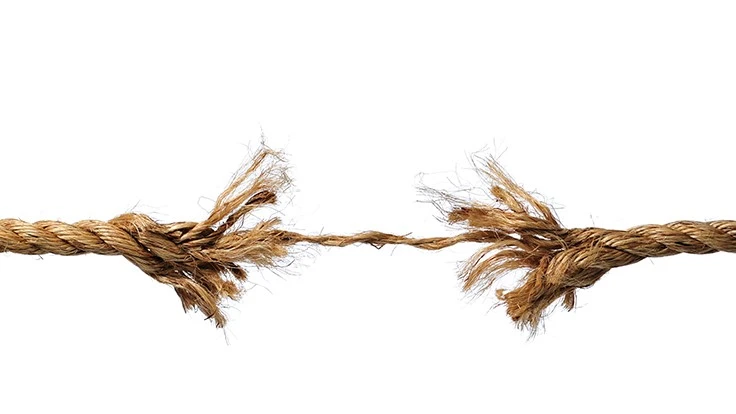
Photo: Adobe Stock

Spring is just around the corner for some of you, and already kicking into gear for many others. That makes this a really good time to talk about managing your stress. It’s also time to plan on how you’ll manage your staff’s morale. After all, if you can’t manage your stress as the owner or manager, it’s probable your staff’s morale will suffer.
Dark days
In my years working in garden centers, botanical gardens and landscaping companies, I referred to spring as “The Black Hole.” In my market, I’d enter that black hole around Feb. 15 and wouldn’t surface until around May 31. If you asked me about anything to do with my life during those months, I’d be hard-pressed to recall any details. Sadly, it also meant missing out on experiencing the joys of spring, as a horticulturist and home gardener. I just worked. All. The. Time.
The Black Hole of spring also usually meant a blackout on things like vacation, sick days, and weekends, for a big chunk of the year. Overtime and exhaustion are often the name of the spring game. I got sick a lot. It’s what those of us in the industry have been conditioned to do for a long time. Spring is supposed to be insane, right?
Productivity propaganda
I no longer buy into that philosophy wholeheartedly. It feels more like a fear-based brainwashing tactic to get employees to overextend themselves beyond what is reasonable or necessary. I understand that for many growers, 80 percent of your annual sales might be shipping out during the brief period of spring. But I’m not sure the business justifies throwing sense and sensibility out the window when it comes to how we care for ourselves and those who work hard for us.
Does spring really need to be that insane, or is it poor planning — or rigid adhesion to outdated policies or company structure — that’s creating a crisis for everyone around you? The trick becomes balancing the heavier workload that inevitably comes in spring — and the stress that comes with it — with our long-term health, happiness and positive business growth.Wrong rules
As an entrepreneur, one of the most important things I learned about my own productivity was that all the rules I learned about how to work were wrong. Yep, wrong. Studies show that employees are often more productive when they work in a focused manner for five to six hours a day — or about 30 hours a week. Not eight straight hours a day, and certainly not 10 hours.
In the green industry, we’re conditioned to work for long stretches and push those who work for us to do the same. Sure, there were some slower times in the colder months. But those times were expected to be filled up with pressures of spring planning and weekends were never work-free, no matter the season. No real flexibility or understanding from employers was offered on these accounts. That’s why I started my own company. My business, my rules.
Right time, right work
Instead of working when convention dictates we work, you could choose to work when you’re naturally most productive. So, what does that look like for me? My brain is firing off as soon as I wake up, which is usually around 5-5:30 a.m. I like to crack open the computer by or before 6 a.m. and start working, which I do until about 9 a.m. Then I get ready and head to my office by 10 a.m. and start working seriously again by around 10:30 a.m. I don’t talk to anyone before I get to the office or pick up calls, and I avoid scheduling morning meetings like the plague. I typically work through lunchtime (entropy is my friend) till about 4 p.m. and try to do most meetings and creative work in the afternoons. Late afternoon and evenings are the best time for me to exercise — after my brain has checked out. I have an employee at the office who arrives at 8:30 a.m. and stays until 4:00 p.m., so the office is covered for most of “normal” business hours. That said, as a business owner I pretty much work seven days a week and I’m cool with that.
Where can you bend?
When you have a physical greenhouse operation and/or a brick and mortar store, you need people there for set hours. Obviously, all your employees are not going to be able to work their ideal productivity schedule based on their required job duties. Often, the point of their job is simply to be there during business hours, as a point person for customers or other employees.
As the owner, general manager or supervisor you can modify your schedule to be more productive and less stressed. When you are less stressed everyone around you is less stressed, and productivity can rise across the board. Plus, spending some time away from the office with regularity shows you trust your staff to do their jobs, even if you aren’t there. Are you their babysitter, or their leader? Trust can be a big morale booster.
Relax your grip
You might not be able to modify everyone’s schedule. You do probably have staff who would be happy working the same amount of time, just earlier or later. Some might take a longer day with longer breaks. If you can’t get creative with your employee’s schedules, you should at least consider how restricting all time off or eliminating breaks in spring can hurt your employee’s morale and health, and your company’s productivity. If you’ve found yourself discouraging staff from staying home when they are sick — or worse, threatening them if they do — then it’s time for a big course correction.
When it comes to the rules of how and when you work this spring, I’m not asking you to let go of the wheel, or your goals or standards. I’m simply suggesting you relax your grip a bit and see where bending the rules can make more dollars, and sense.

Explore the February 2019 Issue
Check out more from this issue and find your next story to read.
Latest from Greenhouse Management
- 2025 Proven Winners Horticulture Scholarship applications now open
- How to improve inventory and shipping management in the greenhouse
- Leading Women of Horticulture: Anna Ball, Ball Hort, and Terri McEnaney, Bailey Nurseries
- GM CEA HERB Part 2: A guide to increasing the sowing density of culinary herbs
- GM CEA HERB Part 1: Best practices for producing culinary herbs in controlled environments
- USDA fires experts on invasive pests, including Asian citrus psyllid, chilli thrips
- CEA Alliance celebrates bipartisan introduction of Supporting Innovation in Agriculture Act
- Dümmen Orange North America celebrating 25th anniversary in 2025





